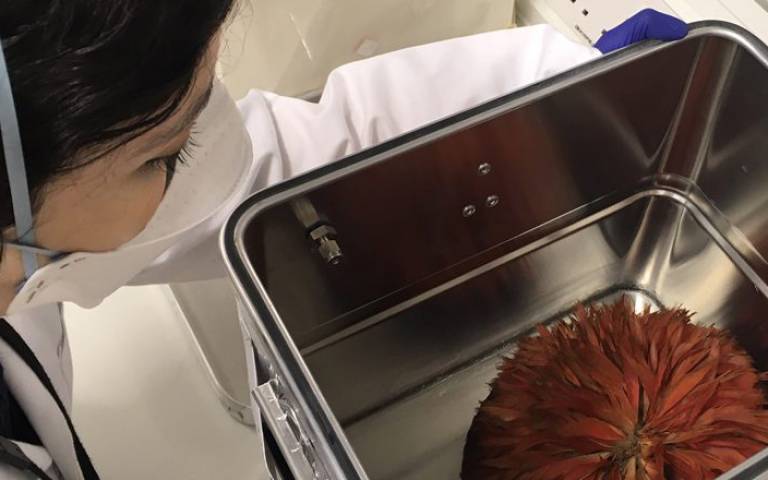Fabiana Portoni publishes on technique to measure pesticide residues in contaminated museum objects
9 August 2019

SEAHA aligned student Fabiana Portoni, alongside her supervisors Professor Matija Strlič and Dr Josep Grau-Bové, has recently published an article in the journal Heritage Science from Spinger Nature. The paper entitled “Application of a non-invasive, non-destructive technique to quantify naphthalene emission rates from museum objects” focuses on the development of an application to measure volatile pesticides residues in museum objects.
Insect pests can cause damage to museum collections. With the aim to protect objects from pest damage, it was once common in museums to use a wide range of pesticides. This was commonly practiced until as recently as the 1990’s. Nowadays, most museums steer away from using toxic chemicals on the objects. However, contamination from earlier treatments can still be a concern for people working with and accessing the collections.
In the last 30 years, the cultural heritage field has undertaken research to identify which pesticide residues remain in their collections and increase their knowledge regarding levels of contaminants present. Therefore, obtaining confirmed quantities of volatile organic residues, and their impact on the air quality surrounding objects, has been identified as an area that would benefit from further investigation.
Fabiana’s study analysed a group of organic objects from the British Museum collection with suspected contamination. After an initial screening to identify the pesticide compounds present in the objects, naphthalene was identified as the most common residue present. Therefore, it was decided to focus the research on this specific compound.
To ensure the long-term preservation of museum objects, it is preferable not to damage them by removing physical samples. The sampling methodology proposed in this study complied with this preference. In addition, the method proposed could be undertaken in situ at museum or heritage sites without impacting on the surrounding environment.
So what was the method? The technique required the object to be placed inside a sampling chamber. This chamber was fitted with an air pump. Air forced through the chamber by the air pump then passed through sorbent tubes. Volatiles emitted by the object could be collected into the sorbent tubes. Later analysis allowed identification of the volatiles and their concentrations.
The results for this research showed the concentration of naphthalene being emitted into the air over a period of time. Calculation of active emissions from individual objects is useful in understanding the behaviour of said objects and their impact on air quality in common museums situations. The information obtained was used to model the naphthalene concentrations for a period of time inside 3 common museum scenarios: a box, a display case and a storage room. The aim of gathering these results is to inform ventilation strategies and improve the dissipation of residues.
The paper states it would be interesting to use the method presented to asses a larger percentage of museum objects and get a relevant sample size of the collection.
Links
- Read the paper on Application of a non-invasive, non-destructive technique to quantify naphthalene emission rates from museum objects in Heritage Science
 Close
Close

